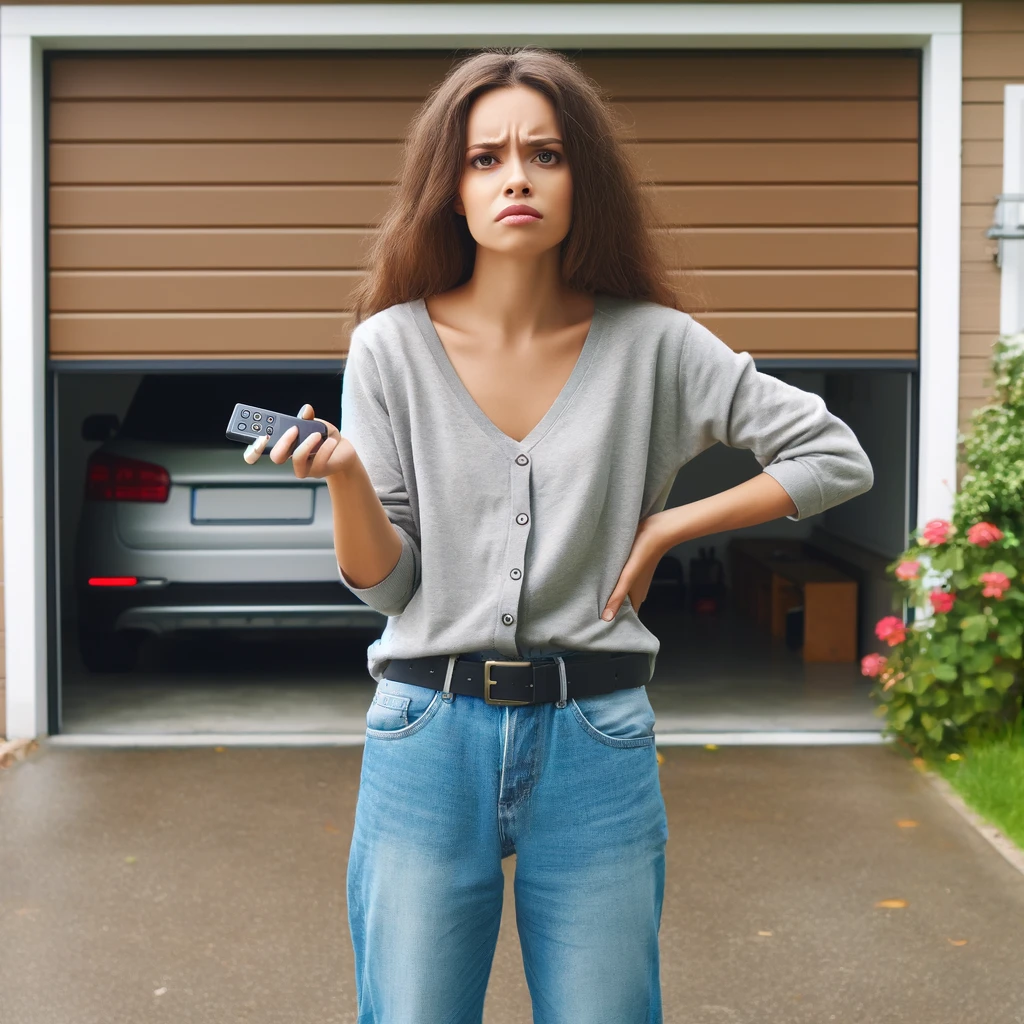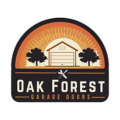Houston, TX Garage Door Repair: How to Troubleshoot and Fix a Non-Responsive Door
Struggling with a garage door that won’t open or close? Discover troubleshooting tips from Oak Forest Garage Doors in Houston, TX. Learn how to fix common issues and when to call in the pros.

Picture this: you’re late for work, and as you rush out the door, you hit the garage door opener, and nothing happens. Nada. Your garage door just sits there, mocking you. If this sounds familiar, don’t worry—you’re not alone. At Oak Forest Garage Doors, we’ve helped countless homeowners and business owners in Houston, TX, deal with this exact scenario. Let’s dive into some common issues and how to fix them so you can get on with your day.
Common Causes of a Non-Responsive Garage Door
Power Supply Issues: Is Your Garage Door Getting Electricity?
First things first, let’s make sure your garage door opener is actually getting power. Check if it’s plugged in properly. If it is, but still not working, test the outlet with another device to ensure it’s functioning. Sometimes, the issue could be as simple as a tripped circuit breaker or a blown fuse.
Remote Control Malfunctions: Battery and Signal Problems
Remote controls are lifesavers—until they stop working. If your garage door isn’t responding, try replacing the remote’s batteries. Still nothing? The issue might be with the remote’s signal. Make sure you’re within range and there are no obstructions blocking the signal.
Sensor Problems: Misalignment and Obstructions
Garage door sensors are crucial for safety, but they can be finicky. If your door won’t close, the sensors might be misaligned or something might be blocking them. Check to ensure they are clean and facing each other. A gentle adjustment might be all you need.
Initial Safety Checks Before Troubleshooting
Ensuring Personal Safety: What You Need to Know
Before you start tinkering, let’s talk safety. Disconnect the garage door opener from the power source to prevent any accidental operation. Wear gloves and safety glasses to protect yourself from any sharp edges or debris.
Disconnecting the Garage Door Opener
To troubleshoot effectively, you might need to operate the garage door manually. Pull the emergency release cord to disconnect the opener. This will allow you to open and close the door by hand and help identify where the issue might be.
Checking the Power Supply
Inspecting the Circuit Breaker and Fuses
Head to your home’s main electrical panel and check for any tripped breakers. If you find one, reset it and see if that solves the problem. If the breaker keeps tripping, you might have a bigger electrical issue on your hands.
Verifying the Power Source: Outlet and Wiring
If the circuit breaker looks fine, test the outlet where your garage door opener is plugged in. Use a different device to ensure it’s working. Also, inspect the power cord and any visible wiring for signs of damage.
Remote Control and Keypad Issues
Replacing Remote Control Batteries: Step-by-Step Guide
Changing the batteries in your remote is a quick fix. Open the battery compartment, remove the old batteries, and replace them with new ones. Make sure to dispose of the old batteries properly.
Reprogramming the Remote Control and Keypad
If new batteries don’t do the trick, try reprogramming your remote or keypad. Consult your garage door opener’s manual for instructions on how to reset and pair the devices.
Sensor Troubleshooting
Cleaning and Realigning the Safety Sensors
Dust and dirt can interfere with your garage door sensors. Clean the sensor lenses with a soft cloth and ensure they are aligned. Both sensors should have lights—if one or both are off or blinking, realign them until the lights stay steady.
Checking for Obstructions: How to Clear the Path
Ensure there are no objects blocking the sensors. Even small items like leaves or dirt can prevent the door from closing. Clear any debris and test the door again.
Manual Operation Test
How to Manually Open and Close Your Garage Door
With the opener disconnected, lift the garage door manually. If it moves smoothly, the problem is likely with the opener. If it’s difficult to lift or doesn’t stay open, you might have an issue with the door’s balance or springs.
Diagnosing Problems Through Manual Operation
Manual operation can help pinpoint the issue. Listen for unusual sounds like grinding or squeaking, which might indicate a mechanical problem.
Inspecting the Garage Door Opener
Identifying Issues with the Motor Unit
The motor unit is the heart of your garage door opener. If it’s making strange noises or not running at all, it might need repairs or replacement. Check for any obvious signs of wear and tear.
Examining the Drive Mechanism: Belt, Chain, and Screw Drives
Different openers use different drive mechanisms. Inspect the belt, chain, or screw for signs of damage or wear. Tighten any loose parts and lubricate as needed.
Spring and Cable Examination
Recognizing Signs of Wear and Tear in Springs
Garage door springs do a lot of heavy lifting. Over time, they can wear out or break. Look for gaps, rust, or other signs of damage. If a spring is broken, it’s best to call a professional for replacement.
Inspecting Cables for Fraying and Damage
Cables work alongside the springs to lift your door. Check for fraying or broken strands. Damaged cables should be replaced promptly to avoid further issues.
Lubrication and Maintenance
Importance of Regular Lubrication for Moving Parts
Keeping your garage door’s moving parts well-lubricated can extend its lifespan and prevent issues. Use a silicone-based lubricant on the rollers, hinges, and tracks.
How to Properly Lubricate Your Garage Door Components
Apply lubricant sparingly to each moving part. Wipe away any excess to avoid attracting dirt and debris. Regular maintenance can keep your door operating smoothly.
When to Call a Professional
Recognizing When DIY Fixes Aren’t Enough
Sometimes, the problem is beyond a simple DIY fix. If you’ve tried everything and your door still won’t cooperate, it’s time to call in the pros.
Choosing the Right Garage Door Repair Service in Houston, TX
Look for a reputable company like Oak Forest Garage Doors. We specialize in garage door replacement in Houston, TX, garage door installation, residential garage door repair, commercial garage door repair, and emergency garage door repair.
FAQs
Q: How often should I lubricate my garage door?
A: It’s best to lubricate your garage door every six months to keep it running smoothly.
Q: My garage door makes a loud noise when opening or closing. What should I do?
A: This could be due to a lack of lubrication or worn-out parts. Try lubricating the moving parts first. If the noise persists, it might be time to replace the rollers or other components.
Q: Can I replace a broken garage door spring myself?
A: Garage door springs are under a lot of tension and can be dangerous to replace on your own. It’s best to call a professional for this repair.
Conclusion
A non-responsive garage door can be a real headache, but with a little troubleshooting, you might be able to fix the issue yourself. If not, Oak Forest Garage Doors is here to help. We proudly serve Houston, TX, a city known for its vibrant culture and iconic landmarks like the Space Center Houston, the Houston Zoo, and the Museum District. Whether you need garage door repair in Houston, a complete garage door replacement, or emergency garage door repair, we’ve got you covered. Contact us today for all your garage door needs and experience the best service in the heart of Texas.
Is your garage door acting up? Have any other questions or need more tips? Drop us a line or check out our other blog posts for more helpful information.
